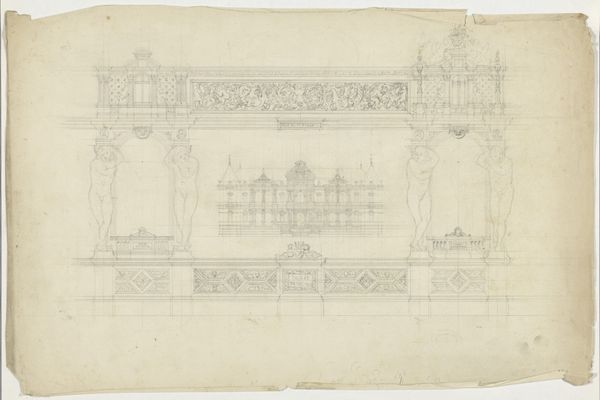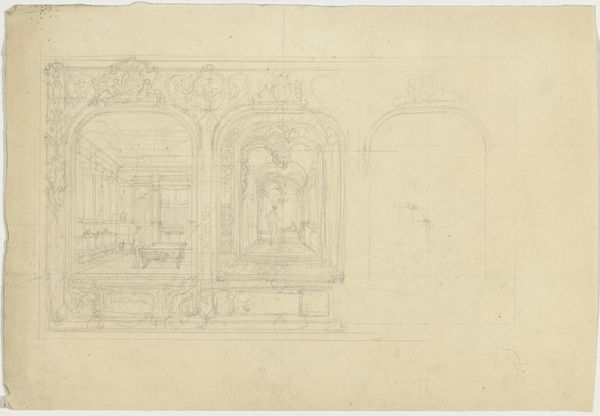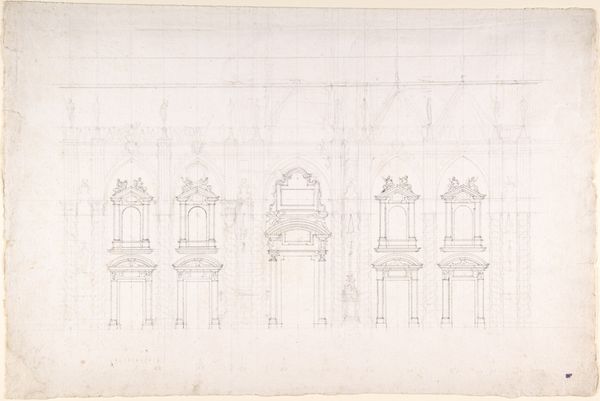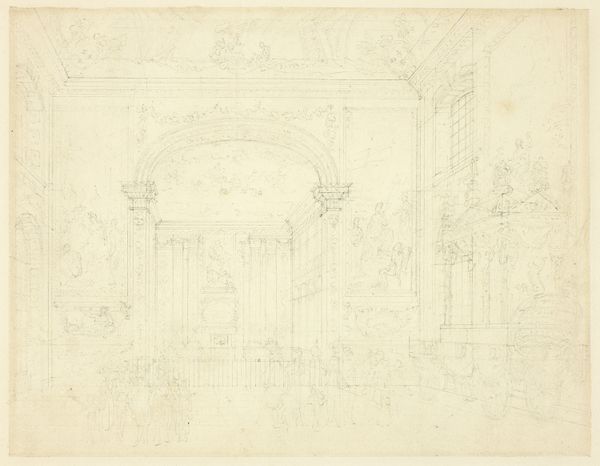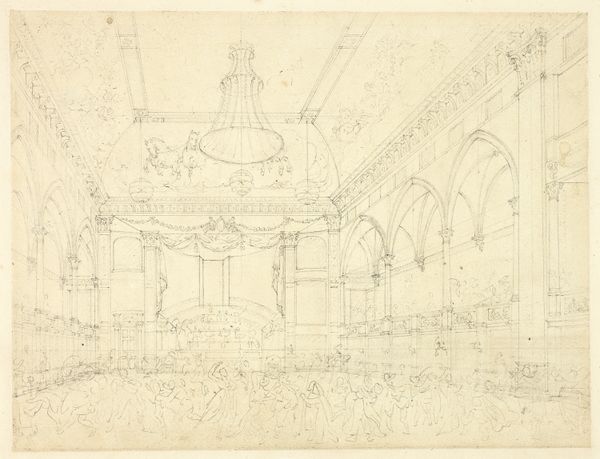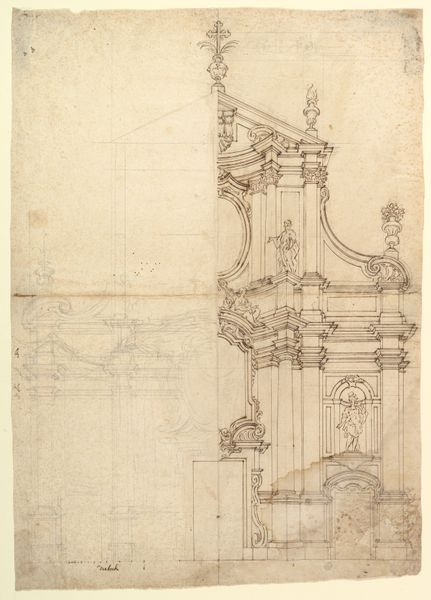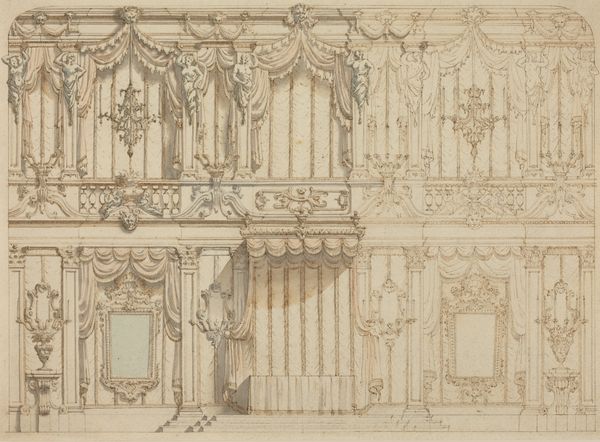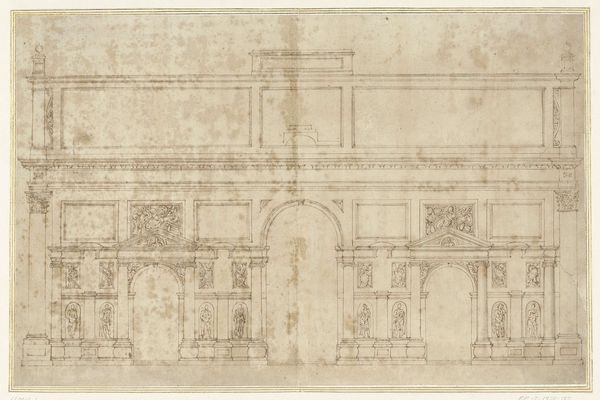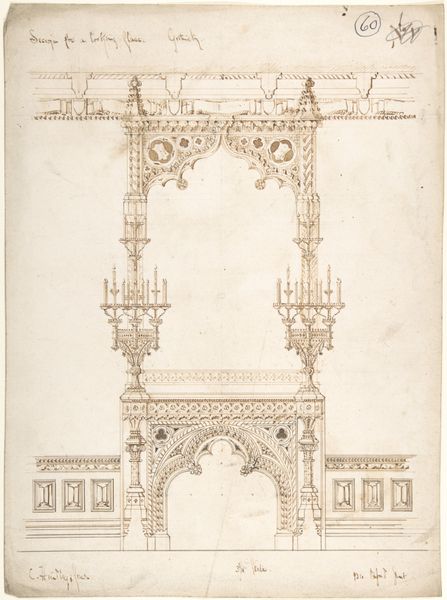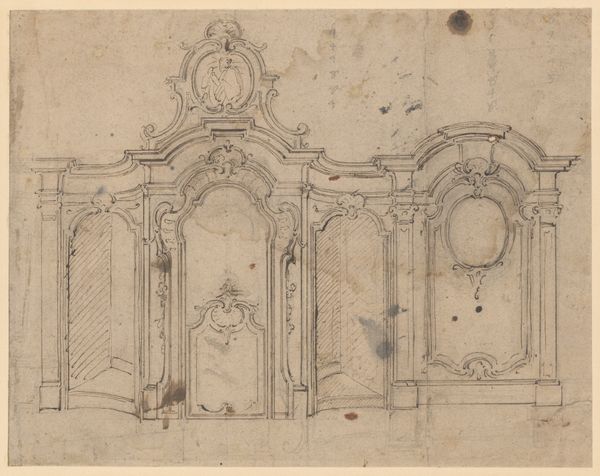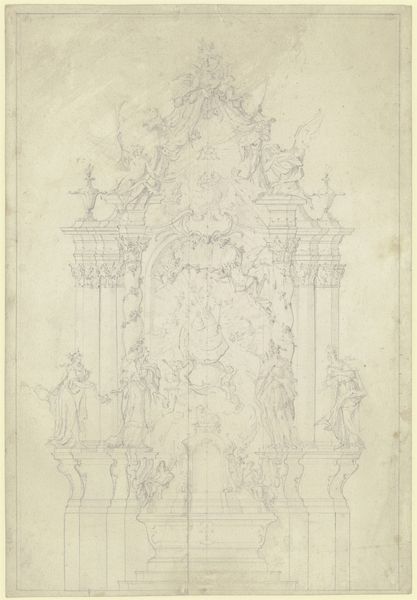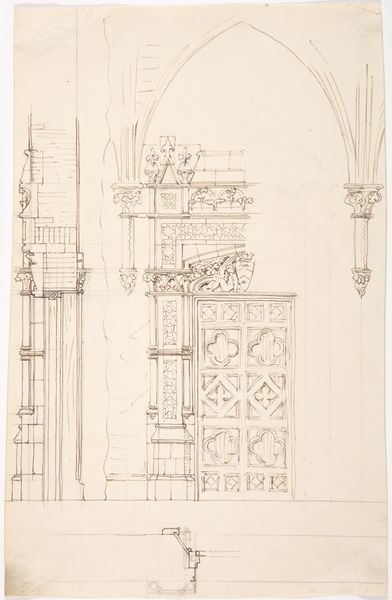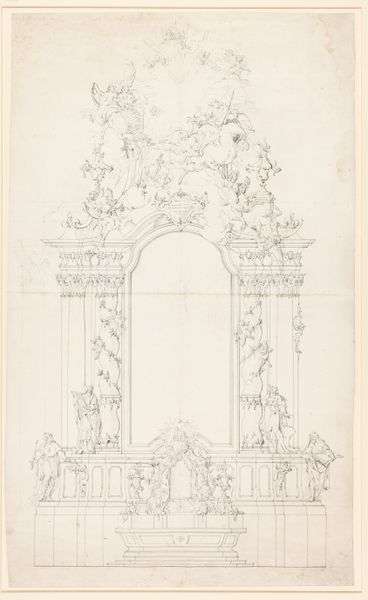
Design for a Stage Set: Palace Hall with Columns and Statues. 1696 - 1756
0:00
0:00
drawing, pencil, architecture
#
drawing
#
baroque
#
geometric
#
pencil
#
cityscape
#
history-painting
#
architecture
Dimensions: 12-3/8 x 14-3/8 in. (31.4 x 36.5 cm)
Copyright: Public Domain
Curator: This pencil drawing presents a "Design for a Stage Set: Palace Hall with Columns and Statues," created sometime between 1696 and 1756 by Giuseppe Galli Bibiena. Editor: Its skeletal elegance gives it a captivating sense of incompleteness. It evokes a kind of sublime aspiration in material form, as if only just extracted from stone and intention. Curator: Indeed, the implied architecture speaks volumes about the Baroque theatrical aesthetic. Notice the soaring columns, the statues perched along the entablature, each element meticulously rendered. Bibiena uses perspective and scale to create a space both imposing and fantastical. Editor: While the finished set might conceal the immense physical effort required to build something on this scale, Bibiena’s medium—pencil—and choice of plain paper brings to my mind all the workshops, tools, scaffolding, and labor involved. What are your thoughts? Curator: Certainly. The work suggests a complex dialogue between design and production. But beyond the logistical, I find myself drawn to the inherent semiotics: the statues themselves, the columns, each contributes to a visual vocabulary. How the repeated columns generate a rhythmical understanding of space... Editor: Rhythm absolutely, but one achieved through tangible things. Consider the transport and shaping of all that marble. Where were the quarries? How many artisans dedicated themselves to replicating Bibiena’s vision? The architecture in drawings of this type often overlooks the significance of production and distribution networks. Curator: I concede the point, of course. Yet this careful representation allows us access to its Platonic ideal. Editor: Ideally rendered! Well, despite any remaining differences, I can only admire the incredible ambition it depicts and invokes. Curator: It's the interplay between structural possibility and imaginative freedom that captures me most.
Comments
No comments
Be the first to comment and join the conversation on the ultimate creative platform.
